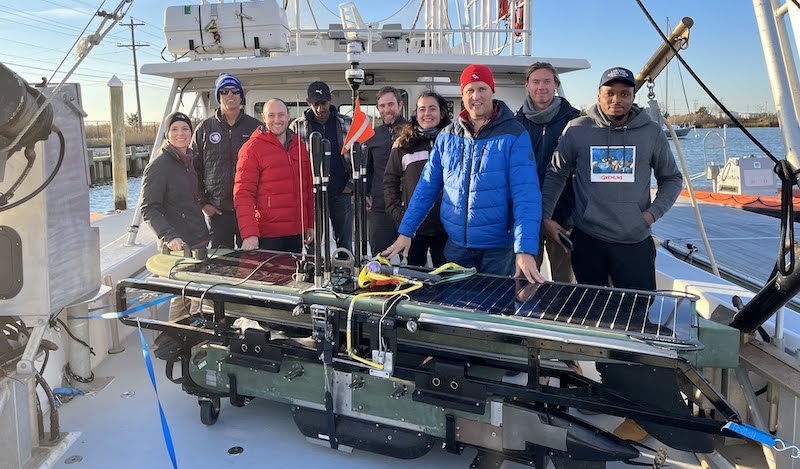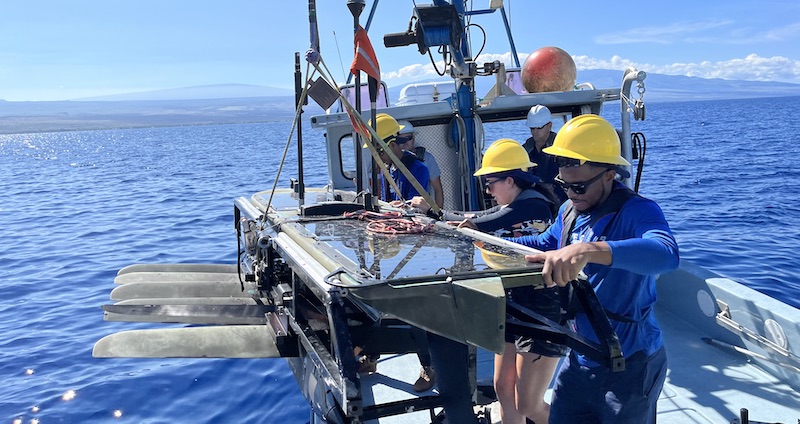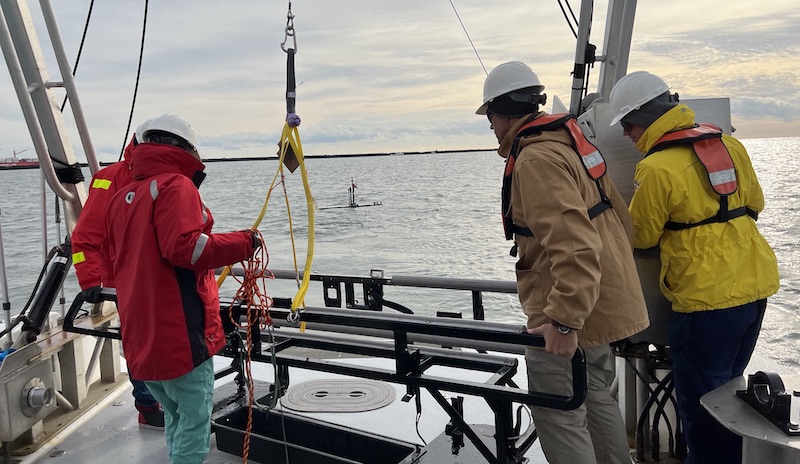Partner
University of Delaware
Mission Location
East Coast, U.S.
Highlights
- The new Blue Economy Tech Center will provide economic opportunities for the Delaware region
- The Wave Glider will be part of Project ABLE's goal to advance the use of autonomous systems
- Educational training and workforce development will help foster the next generation of autonomous ocean engineers
“Our upcoming Wave Glider missions in 2023 have the goal of extending this maiden voyage and gathering more vital observations with the aim of developing standards for using autonomous systems in offshore surveys”
Building Scientific and Economic Growth with Autonomous Systems
As part of the new Blue Economy Tech Center, the University of Delaware and Delaware State University officially launched Project ABLE (Align, Build, Expand, and Leverage) with a kick-off workshop this week. Funded by the National Oceanic and Atmospheric Administration (NOAA), Project ABLE promotes public-private partnerships for marine robotics helping to address questions relating to environmental and ecosystem monitoring, offshore wind energy, and climate change. Liquid Robotics participates in the cohort of industry partners.
“With the creation of the Blue Economy Tech Center, we are pairing academia with industry partners to ignite research activities and economic growth in southern Delaware. Project ABLE specifically focuses on the development and testing of maritime autonomous systems because our region can serve as an excellent catalyst to advance autonomy—leading to new economic development, workforce training, and career paths,” says Robert Nicholson, BlueTech Program Manager and University of Delaware Affiliated Scientist.
Project ABLE will address (1) automated vessels for offshore surveys, (2) acoustic mapping and machine learning detection of unexploded ordnance, (3) marine habitat mapping and morphodynamics, and (4) educational outreach and professional/pre-professional training opportunities.

Liquid Robotics leadership joined the Project ABLE team for their first Wave Glider launch in November 2022. Photo credit: University of Delaware, Project ABLE.
Advancing Technology and Expertise through Hands-on Learning
“In November, we successfully launched our first Wave Glider, after receiving in-depth training from Liquid Robotics. We are using Wave Gliders to help collect critically valuable measurements of the marine environment such as wind speed, wave heights, water temperature, salinity, and tidal currents all of which play a vital role in establishing offshore wind. Our upcoming Wave Glider missions in 2023 have the goal of extending this maiden voyage and gathering more vital observations with the aim of developing standards for using autonomous systems in offshore surveys”, says Dr. Art Trembanis, Professor in the School of Marine Science and Policy, University of Delaware, and Principal Investigator of Project ABLE.
Beyond the advanced technology testing and research activities, another major focus of Project ABLE is to promote educational training and workforce development. Through workshops, technology demonstrations, and internships Project ABLE seeks to expand the awareness of the BlueTech workforce and provide technical training and assistance in the service of critical coastal issues while improving the local and regional economy.

Project ABLE team members visit the Liquid Robotics Hawaiʻi Marine Operations Center for hands-on operator training. Photo credit: University of Delaware, Project ABLE.
Partnerships to Accelerate Widespread Use of Autonomous Systems
Throughout the past 15 years, Liquid Robotics has partnered with several academic marine science and engineering programs to advance ocean monitoring goals and to further develop, test, and validate Wave Glider capabilities, sensors, and payloads. With Liquid Robotics’ recent move to Herndon, Virginia, Project ABLE offers new opportunities to collaborate with partners from academia, state and federal government agencies, and industry along the Atlantic Coast.
“We are excited to team up with Project ABLE and partner with the University of Delaware to immerse students and technicians in the field of autonomy. Hands-on experience is the best way to build expertise and foster the next generation of autonomous ocean engineers”, says Shane Goodenough, CEO of Liquid Robotics. “While uncrewed systems have been successfully deployed for many years, we haven’t yet scratched the surface of tapping the economic and market potential associated with scaled, long-term ocean monitoring. Whether you are a researcher, environmental analyst, or policy maker, there are many roles that can benefit from added insights gained from the data collected and analyzed by autonomous systems,” he adds.

Project ABLE team members successfully execute their first Wave Glider launch off the coast of Delaware. Photo credit: University of Delaware, Project ABLE.